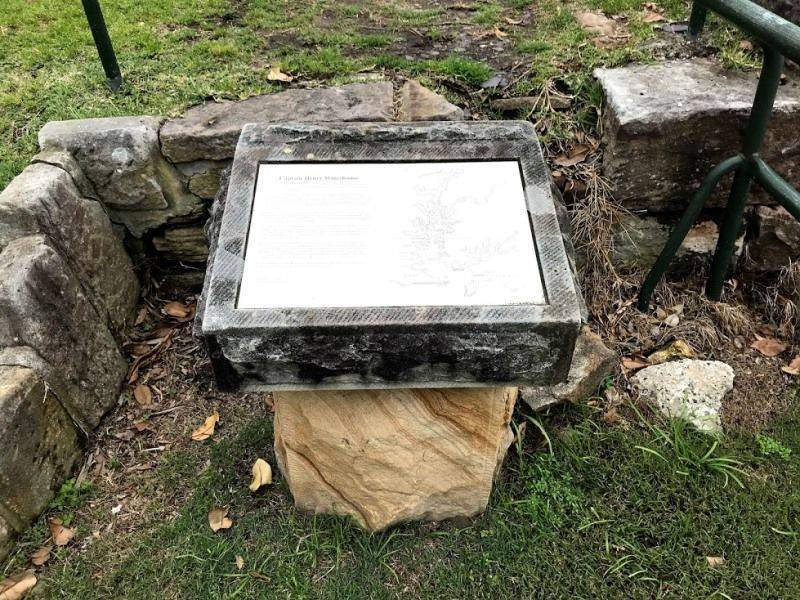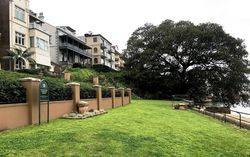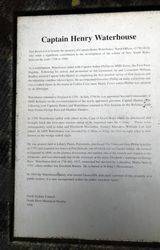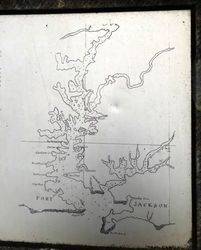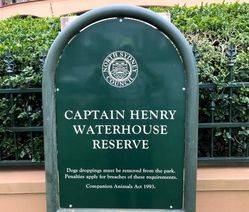
Home » Themes » Landscape » Settlement
Captain Henry WaterhousePrint Page 
The park commemorates Captain Henry Waterhouse, Naval Officer, (1770 - 1812) who made a significant contribution to the development of the colony of New South Wales between the years 1788 to 1800.
Location
| Address: | Jeffreys Street, Captain Henry Waterhouse Reserve , Kirribilli, 2061 |
|---|---|
| State: | NSW |
| Area: | AUS |
| GPS Coordinates: | Lat: -33.849683 Long: 151.213975 Note: GPS Coordinates are approximate. |
Details
| Monument Type: | Park |
|---|---|
| Monument Theme: | Landscape |
| Sub-Theme: | Settlement |
| Approx. Event Start Date: | 1788 |
| Approx. Event End Date: | 1800 |
Dedication
| Approx. Monument Dedication Date: | 1996 |
|---|
Captain Henry Waterhouse
This reserve is to honour the memory of Captain Henry Waterhouse, Naval Officer, (1770-1812) who made a significant contribution to the development of the colony of New South Wales between the years 1788 to 1800. As a midshipman, Waterhouse sailed with Captain Arthur Phillip on HMS Sirius, the First Fleet flagship. Following his arrival, and promotion to 3rd Lieutenant, he and Lieutenant William Bradley assisted Captain John Hunter in completing the first detailed survey of Port Jackson and the adjoining coastline (shown here).
He accompanied Governor Phillip on many excursions and was a central figure in the drama at Collins Cove (now Manly Cove) where Phillip was speared by an Aborigine. Waterhouse returned to England in 1791. In July 1794 he was appointed Second Commander of HMS Reliance on the recommendation of the newly appointed governor, Captain Hunter. The following year Captains Hunter and Waterhouse returned to Port Jackson on the Reliance with their friends George Bass and Matthew Flinders.
In 1796 Waterhouse sailed with others to the Cape of Good Hope where he purchased and brought back the first pure merino sheep to be imported into the Colony. These were subsequently sold to John and Elizabeth Macarthur, Samuel Marsden, William Cox and others. In 1800 Waterhouse was recorded by Collins as being the first to sight what is now known as a wedge-tailed eagle. He was granted land at Liberty Plains, Parramatta, purchased The Vineyard from Philip Schaffer in 1797, and acquired two leases at Port Jackson one of which was on Garden Island.
He returned to England in 1800, on the journey discovering and naming one of the islands now known as the Antipodes, and was afterwards one of the witnesses at his sister Elizabeth's marriage to George Bass. Waterhouse died on 27th July 1812, unmarried but survived by a daughter, Maria, born in 1791, whose mother was Elizabeth Barnes. He is buried at St John's Westminster.
In 1993 the Waterhouse family who owned Greencliffe dedicated a portion of this property as a public reserve. It is now incorporated within the public foreshore lands.
North Sydney Council
North Shore Historical Society
1996.


